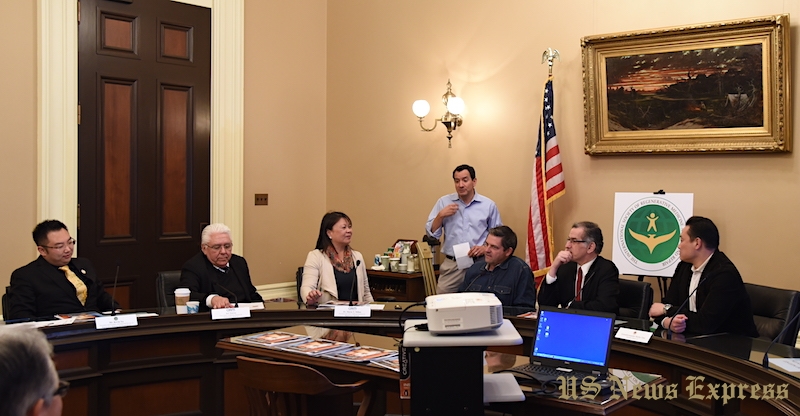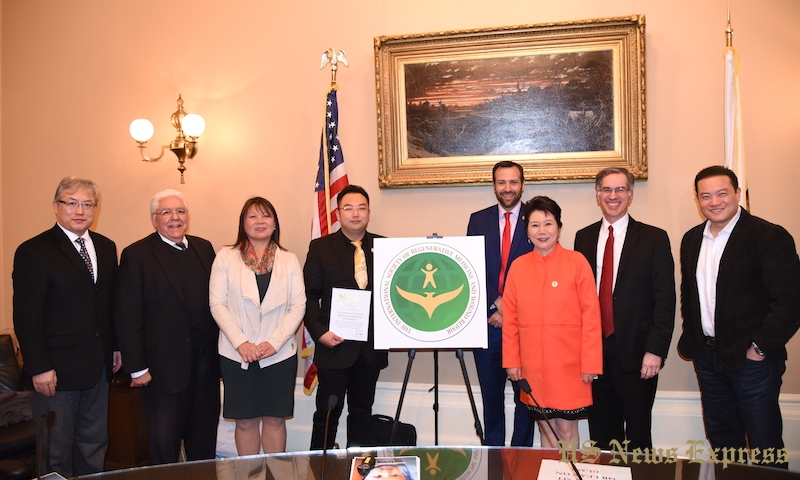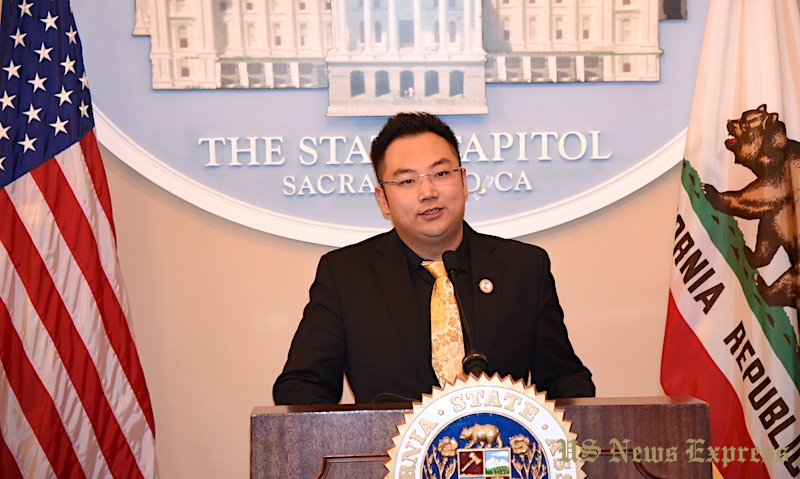
Sacramento, CA—Dozens of state lawmakers, doctors and experts gathered together in the state Capitol to explore the challenges and prospects for regenerative medicine and its application with an aim to raise the public awareness of this cutting edge scientific field.
Anthony Rendon, the Speaker of the State Assembly, Ben Allen, the Chair of the Senate Education Committee, Philip Chen, the deputy minority whip of the State Assembly, and several other legislative leaders attended the meeting and voiced their support for stem cell research and regenerative therapy.
“California became the early champion for regenerative medicine with the passage of Proposition 71 in 2004 which created the California Institute for Regenerative Medicine (CIRM),” said Senator Ben Allen. “Since then the institute has issued billions of dollars and grants to institutions performing critical research in this area.”
Proposition 71, also known as the California Stem Cell Research and Cures Act, was approved by California voters in 2004 to make legal stem cell research in the state. And the proposition, which led to the creation of state taxpayer-funded CIRM, demonstrated California’s determination to be a leader in stem cell research.

At national level, stem cell research is funded by National Institutes of Health, which falls under the Department of Health and Human Services. It remains controversial to use public money to fund research on embryonic stem cell and fetal tissue.
Trump administration has not clearly stated its position on this issue. But the State of California seems ready to “carry the torch in stem cell field” as Senator Ben Allen put it in his remarks at today’s event.
“California will take a stance in investing in our future,” he added. “We are doing this with our global friends and partners from the People’s Republic of China.”
It is widely reported that China has made some significant progress in regenerative medicine. Just last week National Public Radio in the United States published a reported titled “Doctors in China Lead Race to Treat Cancer by Editing Genes”, which is about an esophagus cancer patient who tried gene therapy known as CRISPR at Hangzhou Cancer Hospital. In the United States only one CRISPR cancer study has been approved according to the report.
Elliot Chaikof, Professor of Surgery at the Harvard Medical Center and Surgeon-in-Chief at the Beth Israel Deaconess Medical Center, shared the current situation of regenerative research around the world. Though regenerative medicine represents a new hope for human health, the public lacks understanding of this scientific field. And the support from the government and the society is far from enough.

“We try to find out the future of regenerative medicine, pave the ways for hundreds and thousands of doctors, and light up the hope for countless patients who need the power of regeneration from them to continue their journey of life, ” said Kevin Xu, the founder of the International Society for Regenerative Medicine and Wound Repair, who applauded the deep conversation involving lawmakers, leaders and experts for clarifying the confusions and misunderstandings in terms of this new rising science.
Senator Ben Allen also proposed to name the forth Tuesday of February each year as “Regenerative Medicine Day” to raise public awareness and pay respect to the late Chinese doctor Rongxiang Xu for his contributions in advancing regenerative medical research.



















